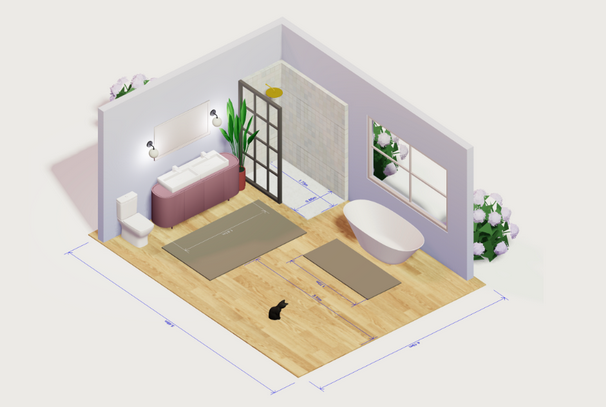- Home
- Articles
- Architectural Portfolio
- Architectral Presentation
- Inspirational Stories
- Architecture News
- Visualization
- BIM Industry
- Facade Design
- Parametric Design
- Career
- Landscape Architecture
- Construction
- Artificial Intelligence
- Sketching
- Design Softwares
- Diagrams
- Writing
- Architectural Tips
- Sustainability
- Courses
- Concept
- Technology
- History & Heritage
- Future of Architecture
- Guides & How-To
- Projects
- Interior Design
- Competitions
- Jobs
- Store
- Tools
- More
- Home
- Articles
- Architectural Portfolio
- Architectral Presentation
- Inspirational Stories
- Architecture News
- Visualization
- BIM Industry
- Facade Design
- Parametric Design
- Career
- Landscape Architecture
- Construction
- Artificial Intelligence
- Sketching
- Design Softwares
- Diagrams
- Writing
- Architectural Tips
- Sustainability
- Courses
- Concept
- Technology
- History & Heritage
- Future of Architecture
- Guides & How-To
- Projects
- Interior Design
- Competitions
- Jobs
- Store
- Tools
- More
Best Online Study Tools for Architecture Students
Studying architecture is a mix of creativity, technical skills, and project management. Whether you're sketching initial ideas, creating detailed 3D models, or organizing your workload, having the right tools can make a huge difference. Luckily, plenty of online tools can help architecture students streamline their work and enhance their learning experience.

Studying architecture is a mix of creativity, technical skills, and project management. Whether you’re sketching initial ideas, creating detailed 3D models, or organizing your workload, having the right tools can make a huge difference. Luckily, plenty of online tools can help architecture students streamline their work and enhance their learning experience.
In this article, we’ll explore the best study tools for architecture students, focusing on three key areas: drafting, 3D modeling, and project management. Whether you’re a beginner or an advanced student, these tools will help you work smarter and more efficiently.
Table of Contents
ToggleColleges and Universities Offering Architecture Programs
If you’re passionate about architecture and looking for the right place to develop your skills, several prestigious universities around the world offer top-tier programs. These institutions provide a blend of design theory, technical knowledge, and hands-on experience, shaping the future of architecture.
In the United States, the Massachusetts Institute of Technology (MIT) consistently ranks among the best for its research-driven and innovative approach to architecture. Harvard University’s Graduate School of Design (GSD) is another powerhouse, offering a Master of Architecture (M.Arch) program that places a strong emphasis on sustainability and urban design. Over at Columbia University, the Graduate School of Architecture, Planning, and Preservation (GSAPP) is well known for its focus on architectural theory and urban studies, attracting students from all over the world.

If you’re looking for a strong undergraduate program, Cornell University is a great option, offering a Bachelor of Architecture (B.Arch) degree that prepares students for professional practice right after graduation. Meanwhile, the University of California, Berkeley combines environmental design with a progressive, socially aware curriculum, making it an excellent choice for those interested in sustainable architecture.
How Architecture Courses Are Structured in Modern Universities
Architecture programs in the United States are carefully designed to balance creative exploration, technical skills, and theoretical knowledge. Students typically begin their studies with foundational courses in design principles, history of architecture, and technical drawing, helping them develop a strong understanding of spatial relationships and structural concepts. As they progress, they dive into more specialized subjects such as sustainable design, urban planning, construction technology, and parametric modeling, using software like AutoCAD, Revit, and Rhino to bring their ideas to life. Courses are often divided into studio-based learning, lectures, and hands-on workshops, ensuring that students gain both conceptual and practical experience.
One reason many students pass their architecture courses with ease is the availability of Edubirdie course notes. With demanding coursework and tight deadlines, students often rely on EduBirdie’s well-organized notes, sample assignments, and study guides to prepare for exams and complete projects efficiently. These resources provide valuable insights into architectural theories, case studies, and technical design solutions, allowing students to save time and focus on their creative work. Whether it’s understanding structural calculations, perfecting design presentations, or mastering complex modeling techniques, EduBirdie gives architecture students an academic advantage, helping them navigate their courses with confidence and success.
Best Drafting Tools for Architecture Students
Drafting is an essential skill in architecture. Even with advanced 3D modeling software, students still need precise 2D drawings. Here are some of the best online drafting tools:
1. AutoCAD – The Industry Standard for Drafting
Best for: Detailed 2D and 3D architectural drawings Price: Free for students, paid plans available
AutoCAD is one of the most widely used drafting tools in the architecture industry. It allows you to create accurate technical drawings, floor plans, and site plans with ease. The software supports both 2D drafting and 3D modeling, making it a great all-in-one tool for architecture students.
💡 Why Use AutoCAD?
- Industry-standard software, widely used in architecture firms
- Extensive library of symbols and templates
- Free student version available
2. SketchUp Free – Simple and Beginner-Friendly
Best for: Quick sketches and basic 3D modeling Price: Free (Pro version available)
SketchUp is a great tool for students who are new to drafting and 3D modeling. The free version is available online, making it easily accessible for students on any device. While it may not have the precision of AutoCAD, it’s perfect for conceptual sketches and quick drafts.
💡 Why Use SketchUp?
- Intuitive interface, easy to learn
- Cloud-based, no need for heavy software installation
- Great for conceptual work
Best 3D Modeling Tools for Architecture Students
In modern architecture programs across the United States, 3D modeling has become a fundamental part of the curriculum, helping students bring their designs to life with digital precision. Universities such as MIT, Harvard, Columbia, and Cornell integrate 3D modeling into their courses from the very first year, ensuring students develop both conceptual and technical skills early on. Typically, students begin with basic modeling exercises using software like SketchUp or Rhino, allowing them to understand spatial relationships, scale, and form. As they advance, they move on to more complex tools such as Revit for Building Information Modeling (BIM) and Grasshopper for parametric design, which are essential for modern architectural workflows.
A typical 3D modeling course is structured around a combination of lectures, hands-on studio work, and collaborative projects. Professors introduce students to the core principles of digital modeling, including surface modeling, solid modeling, and parametric design. Assignments often require students to replicate real-world structures, create conceptual forms, or design architectural elements that respond to specific environmental and structural constraints.
Colleges also emphasize the integration of 3D modeling with digital fabrication, teaching students how to use laser cutters, CNC machines, and 3D printers to turn their digital models into physical prototypes. This hands-on approach bridges the gap between virtual design and real-world construction, giving students a practical understanding of materiality and structure.
3D modeling is a crucial part of architectural design. It allows you to bring your ideas to life, experiment with forms, and visualize your projects in a realistic way. Here are some of the best 3D modeling tools for students:
3. Blender – Free and Powerful for 3D Visualization
Best for: High-quality 3D rendering and visualization Price: Free
Blender is an open-source 3D modeling software that offers professional-level rendering, texturing, and animation tools. While it’s not specifically made for architecture, many students and professionals use it for creating stunning visualizations and walkthroughs.
💡 Why Use Blender?
- Completely free and open-source
- Advanced rendering capabilities
- Great for creating realistic architectural presentations

4. Rhino – Best for Organic and Complex Forms
Best for: Parametric design and complex geometries Price: Student discount available ($195 for a full license)
Rhino is one of the most powerful tools for architects who love experimenting with unique shapes and parametric design. It works well with Grasshopper, a visual programming tool that allows students to create complex forms easily.
💡 Why Use Rhino?
- Excellent for parametric and organic modeling
- Works well with Grasshopper for algorithmic design
- Used by many professional architects and firms
5. Revit – Essential for Building Information Modeling (BIM)
Best for: BIM (Building Information Modeling) Price: Free for students, paid plans available
Revit is an essential tool for students who want to learn BIM, which is becoming the future of architectural design and construction. Unlike other 3D modeling tools, Revit focuses on building performance, collaboration, and documentation.
💡 Why Use Revit?
- Free student version available
- Essential for modern architectural workflows
- Allows for collaboration with engineers and contractors
Best Project Management Tools for Architecture Students
Architecture students juggle multiple projects, deadlines, and group work. Having the right project management tools can help you stay organized and reduce stress.
6. Trello – Best for Task Management
Best for: Organizing assignments and deadlines Price: Free (Paid plans available)
Trello is a simple, visual project management tool that helps students organize their work using boards, lists, and cards. You can create separate boards for different projects, set deadlines, and collaborate with classmates.
💡 Why Use Trello?
- Simple and user-friendly
- Great for managing multiple projects
- Free version is perfect for students
7. Notion – All-in-One Productivity Tool
Best for: Notes, research, and project tracking Price: Free for students
Notion is an excellent tool for taking notes, organizing research, and tracking progress. You can create databases, to-do lists, and even collaborative project pages. It’s like having a digital notebook tailored to your architecture studies.
💡 Why Use Notion?
- Combines note-taking, task management, and databases
- Customizable templates for architecture projects
- Free student version available
8. Miro – Best for Online Collaboration
Best for: Brainstorming and group projects Price: Free (Paid plans available)
Miro is an online whiteboard tool that allows architecture students to brainstorm, plan projects, and collaborate visually. It’s great for working on group projects, especially when studying remotely.
💡 Why Use Miro?
- Great for team collaboration
- Ideal for brainstorming and design thinking
- Works well for online and remote studies

Honorable Mentions (Extra Useful Tools)
Here are some additional tools that can make your architecture studies even easier:
- Canva – Great for creating visually appealing presentations and portfolios
- Morpholio Trace – A digital sketching app for tablets, perfect for concept development
- Google Drive & Dropbox – Essential for storing and sharing large architecture files
Architecture students need a mix of drafting, 3D modeling, and project management tools to succeed. Whether you’re creating detailed technical drawings, visualizing your designs in 3D, or keeping track of deadlines, the right tools can make all the difference.
From AutoCAD and Rhino for drafting and modeling to Trello and Notion for project management, there’s a tool for every aspect of your studies. Many of these tools offer free student versions, so take advantage of them and start exploring!
What’s your favorite online study tool as an architecture student? Let us know in the comments! 😊
- Architecture students
- best 3D modeling study tools online
- best architecture exam prep tools online
- best architecture learning platforms online
- best architecture student collaboration tools
- best architecture student study apps
- best architecture tutorial websites
- best BIM learning resources online
- best CAD study tools for architecture students
- best digital architecture study resources
- best online architecture tools for students
- Best Online Study Tools
- best online study tools for architecture students
- best virtual architecture studio tools
- Online Study Tools
illustrarch is your daily dose of architecture. Leading community designed for all lovers of illustration and #drawing.
3 Comments
Submit your architectural projects
Follow these steps for submission your project. Submission FormLatest Posts
Best Architectural Software for Students in 2025
In 2025, digital tools aren’t just convenient — they’re essential to learning,...
Beginner’s Guide to Arcadium 3D: Your First Room Design in 5 Easy Steps
Designing a room used to mean wrestling with tape measures, mood boards,...
Architectural Design Software Tools for Student Design
Many architecture students want fast ways to explore ideas. Some of them...
Lumion 2024.3: It’s Time to Enhance Urban Visualization
With 5x faster video rendering, a remarkable improvement in material quality, and...












This article talks about useful tools for architecture students. I think it’s nice to have options.
The information here seems helpful for architecture studies. I guess many students might find these tools useful.
It’s interesting to see the different tools available for architecture. I don’t study it, but it sounds important.